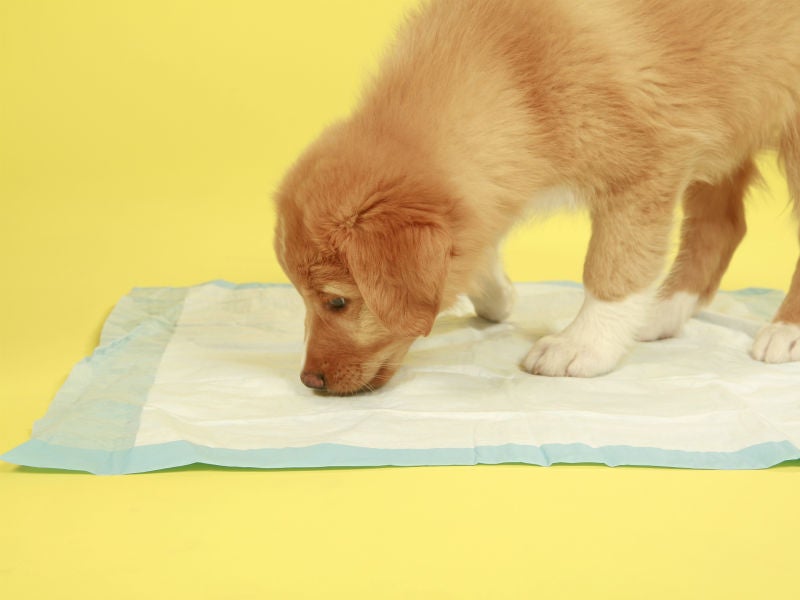Our goal is to use our educational materials to help save the lives of dogs and cats. To support our efforts, this page may contain affiliate links. With no additional cost to you, we receive a commission for qualifying purchases.
Cathy is the lead instructor at Pupstanding Academy and a Preventive Vets dog behavior expert. She focuses on fostering strong bonds between people and their pets through open communication, positive reinforcement, and the use of non-coercive training techniques. She has had the chance to work with hundreds of dogs on a variety of training and behavior issues over the course of her more than 13 years of experience. Dog aggression, resource guarding, separation anxiety, and puppy socialization are some of her areas of expertise.
Cathy holds the CPDT-KA and CBCC-KA certifications from the Certification Council of Professional Dog Trainers. Cathy is a member of the Association of Professional Dog Trainers, the Pet Professional Guild, and the Dog Writers Association of America. She is also a Fear Free Certified Certified Professional.
She enjoys reading, hiking with her two Cardigan Welsh Corgis, and paddleboarding when she’s not obsessing over dogs.
Clubs Offering:
AKC participates in affiliate advertising programs that give websites a way to monetize their content by promoting and linking to akc. org. If you buy something after reading this article, we might get a cut of the sale.
Potty training can be enough to make you wonder what you were thinking despite the joy and excitement of bringing home a new puppy. How to potty train a puppy is actually one of the most frequently asked questions on The AKC GoodDog! Helpline. The objective of potty training is straightforward, but the specifics—such as whether to use puppy pads or even an indoor dog bathroom—can be confusing.
The best option is to let your dog relieve itself outside, but potty pads can occasionally help with successful potty training. For instance, frequent trips outside are required for very young puppies. For elderly owners or apartment dwellers, that might be too difficult. Alternatively, until your puppy is fully immunized, you might want to limit your puppy’s exposure if you don’t have a backyard and your dog uses a public restroom. Read on for advice on how to potty train a puppy on pads if you want to incorporate potty pads or indoor potties into your puppy’s housebreaking routine.
When potty training your new puppy is taking longer than you anticipated, it’s easy to become frustrated. But it’s essential to be patient during this process. Remember, potty training takes time. Do not demand more of your puppy than he is capable of providing. The following points will help you keep your cool:


For safety reasons, it’s crucial to keep an eye on your puppy at all times, but doing so is also essential for successful potty training. If you don’t keep an eye on the dog, you can’t prevent accidents. Here are some tips to help with supervision:

Because dogs don’t like to pee in their beds, crates are essential for potty training. Additionally, if you introduce a crate to your puppy properly, he will view it as a safe place rather than a punishment due to his strong denning instinct. When you first introduce your puppy to a crate, bear the following in mind:
Don’t undervalue routine and consistency when considering how to potty train a puppy. Setting a schedule and sticking to it will help you avoid accidents and make sure your puppy has every opportunity to relieve himself in the proper place. These tips will help you stay consistent:
Doing their business in the appropriate place is no different from other rewarding behaviors that dogs repeat. When you praise and reward your puppy for using his potty pad, he will be more likely to do so in the future. Keep the following in mind when rewarding your puppy:
Signs It’s Time To Take Away The Puppy Pads
Where Is The Best Place To Start Potty Training A Puppy
When potty training a puppy, you should pick a place that is quiet and not distracting. The area of your home where the puppy will spend the majority of its time going potty as it adjusts to its new surroundings and learns what is expected of it
To ensure that there are no distractions while they conduct their business, the area should be away from people and other animals. Additionally, you want it to be an empty room so that it doesn’t get messy or cluttered with things like toys or food bowls.
Choose a room with an indoor and an outdoor door, such as one through your garage, if at all possible. Giving your dog access to the outside while preventing them from roaming around the house unattended will make it easier for you to teach them where to relieve themselves.
FAQ
How long should a dog be pad trained?
Full house training for a puppy typically takes four to six months, but for some puppies it can take up to a year. Size is a factor to consider. For instance, smaller breeds require more frequent trips outside because their bladders are smaller and their metabolisms are faster. Another factor to consider is your puppy’s past living situation.
Should I put puppy pads all over the house?
Place them in one location of the house. Over time, this location ought to remain constant and not move around the house. The toilet pad should ideally be placed on wood or tile rather than carpet. A pee pad on carpet can be confusing.
Do you change a puppy pad every time they pee on it?
Older puppies might require changing every four to six hours. You will need to change your puppy’s pads more frequently if he is large or overweight. In order to prevent him from having an accident during one of those breaks, you should make sure he has enough time between bathroom breaks.
How do you wean puppies off puppy pads?
- Step by step, bring your dog’s pad closer to the door.
- Reduce the Number of Potty Pads in Your Home. …
- Take Your Dog Out for Frequent Outside Potty Breaks. …
- Reward for Going Potty Outside! …
- Keep an eye out for signs that your dog needs to use the restroom.
